Sikorsky WW2 Helicopters
At the time of printing this, I have no idea who the authors are as these were
sent to me third hand. Because I love the 'different' story
involving WW2, I
have put this in here but did not write any of it.
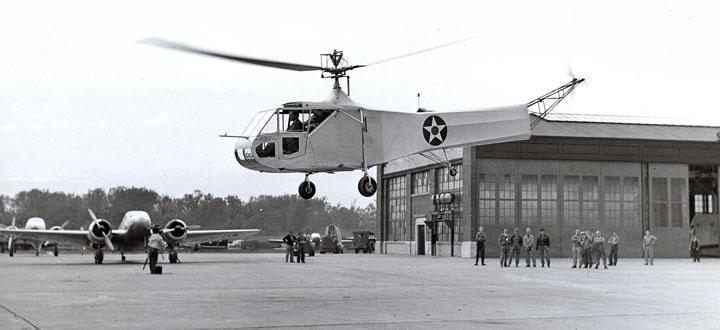 Sikorsky XR-4 41-18874 at Wright Field, Ohio, 17 May 1942. (Sikorsky Historical Archives) |
| 17 May 1942: After a 761 mile (1,224.7 kilometer) flight over five days, test pilot Charles Lester (“Les”) Morris and Igor Sikorsky arrived at Wright Field, Dayton, Ohio, to deliver the U.S. Army’s first helicopter, the Sikorsky XR-4. Morris hovered directly up to the base administration building and landed there. He and Sikorsky were greeted by a large group of people which included Lieutenant Colonel Hollingsworth Franklin (“Frank”) Gregory, the Army’s designated rotorcraft expert, and pioneer aviator Orville Wright. |
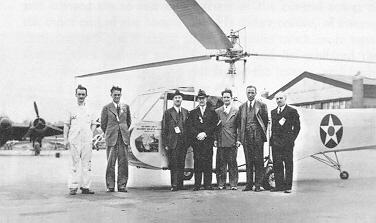 |
| The Sikorsky XR-4 41-18874 at Wright Field, 17 May 1942. Left to right: E. Walsh, A. Planefisch, Igor Sikorsky, Orville Wright, R. Alex, Les Morris, B. Labensky. (Sikorsky Historical Archives) |
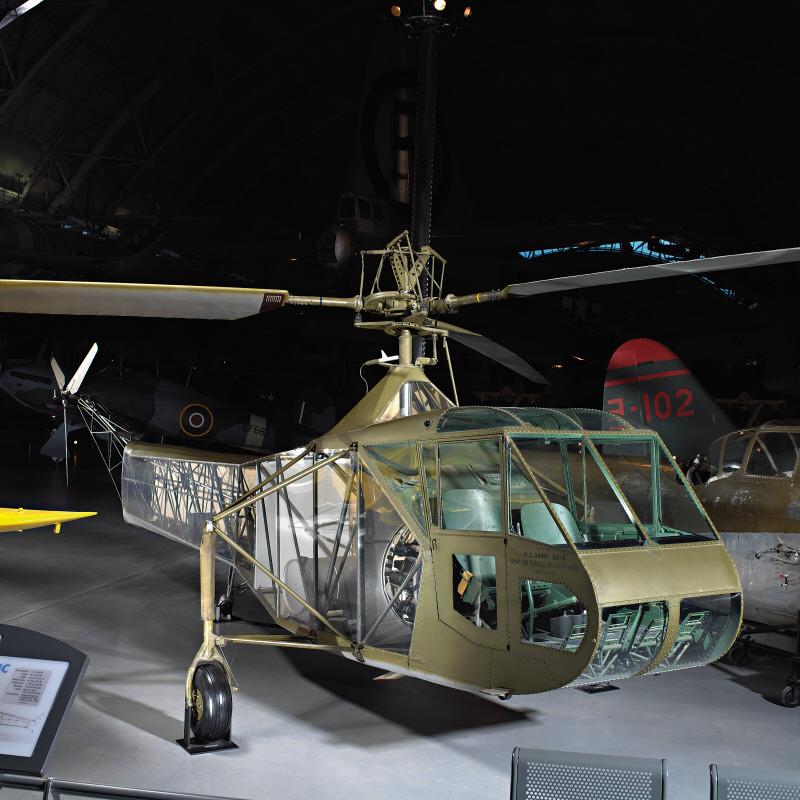 Sikorsky XR-4C 41-18874 at the National Air and Space Museum. (NASM) |
|
From the Sikorsky factory at Stratford, Connecticut, to Wright Field, Ohio, was 761 miles (1,224.7 kilometers), direct. Because of the XR-4’s low speed and short range (weight limitations restricted the quantity of gasoline it could carry) the distance was covered in sixteen separate flights with a total flight time of 16 hours, 10 minutes. The longest single flight lasted 1 hour, 50 minutes, a new world’s record for helicopter flight endurance. Igor Sikorsky joined Les Morris for the final leg of the flight. The XR-4 was derived from Igor Sikorsky’s experimental VS-300. The company designation was VS-316A. When turned over to the Army, it was assigned serial number 41-18874. At Wright Field the new helicopter was used for flight testing. The Army, Navy and Coast Guard each ordered several production R-4Bs. After an engine upgrade, the XR-4 was redesignated XR-4C. Today, the first military helicopter is at the Smithsonian Institution National Air and Space Museum’s Steven F. Udvar-Hazy Center. |
Sikorsky YR-4B 43-28247
|
Second Lieutenant Carter Harman, United States Army Air Corps. (U.S. Army) |
|
On the 21st April 1944 the first military helicopter combat rescue began with Lieutenant Carter Harman, 1st Air Commando Group, being ordered to proceed from Lalaghat, India with his Sikorsky YR-4B, 43-28247, 600 miles (965 kilometers) to Taro in northern Burma. Technical Sergeant Ed “Murphy” Hladovcak, pilot of a Stinson L-1 Vigilant liaison airplane, had crashed in the jungle behind Japanese lines while transporting three wounded British soldiers. Lt. Harman was assigned to attempt the rescue. It would be a marathon operation. It took Harman and his Sikorsky 24 hours to arrive at Taro. After a brief rest and dip in the river, he continued 125 miles (202 kilometers) to an airstrip in the jungle called “Aberdeen”, which was well behind the Japanese lines. It was from here that Sgt. Hladovcak had been operating, flying out wounded soldiers. From Aberdeen, Harman was led to the location of the downed men by another liaison airplane. The survivors were surrounded by Japanese soldiers who had found the crashed airplane and were trying to locate the pilot and his passengers. |
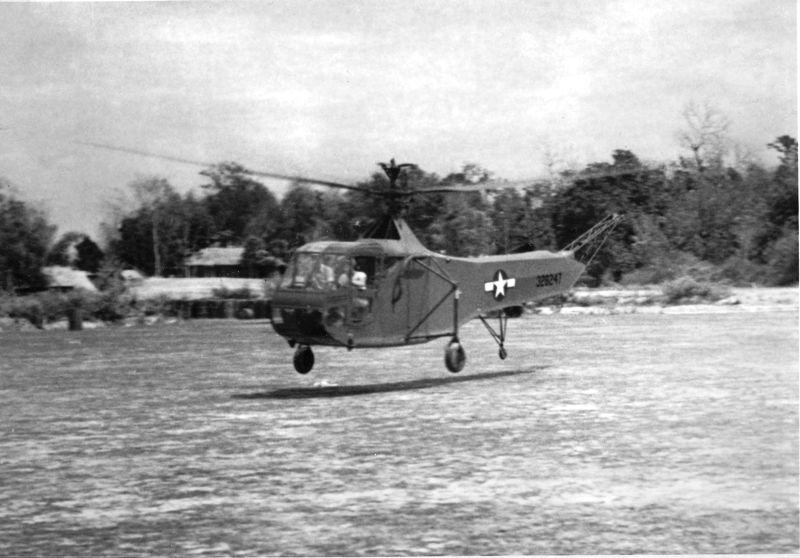 |
|
Lt. Carter Harman (above) hovering in ground effect with Sikorsky YR-4B
Hoverfly 43-28247 at Lalaghat, India, March 1944. This is the helicopter with which he made the first combat rescue, 21–25 April 1944. (U.S. Air Force) |
|
The Sikorsky YR-4B was powered by a 422-cubic-inch-displacement (6.92 liter) air-cooled Warner R-500-1 seven-cylinder radial engine which produced 185 horsepower at 2,050 r.p.m. Because of the high heat, elevation and humidity (“Density Altitude”, or “d.a.”) the engine was unable to produce its full rated power. Also, the helicopter’s rotor blades were not as efficient as they would be at lower altitudes. Harman planned to lift one of the survivors out of the clearing in the jungle and fly a short distance to a sand bank where other L-1 or L-5 liaison airplanes could fly them back to Aberdeen. He would then repeat the operation until all four men had been rescued. However, it took the rest of the day to airlift just the first two very sick and wounded soldiers. On the second flight, the helicopter’s engine was overheating and on landing it seized and could not be restarted. Sergeant Hladovcak and the remaining soldier were still in the jungle, Lieutenant Harman was stuck by the river bank and Japanese soldiers were everywhere. On the morning of 25 April Lieutenant Harman was able to get the helicopter’s engine to start, and again, one at a time, he rescued the two remaining survivors. A liaison plane flew out the wounded soldier while Hladovcak rode along with Harman back to “Aberdeen”. He had never seen a helicopter before! For his actions, Lieutenant Carter Harman was awarded the Distinguished Flying Cross. Sikorsky YR-4B 43-28247 was condemned 31 December 1944. |
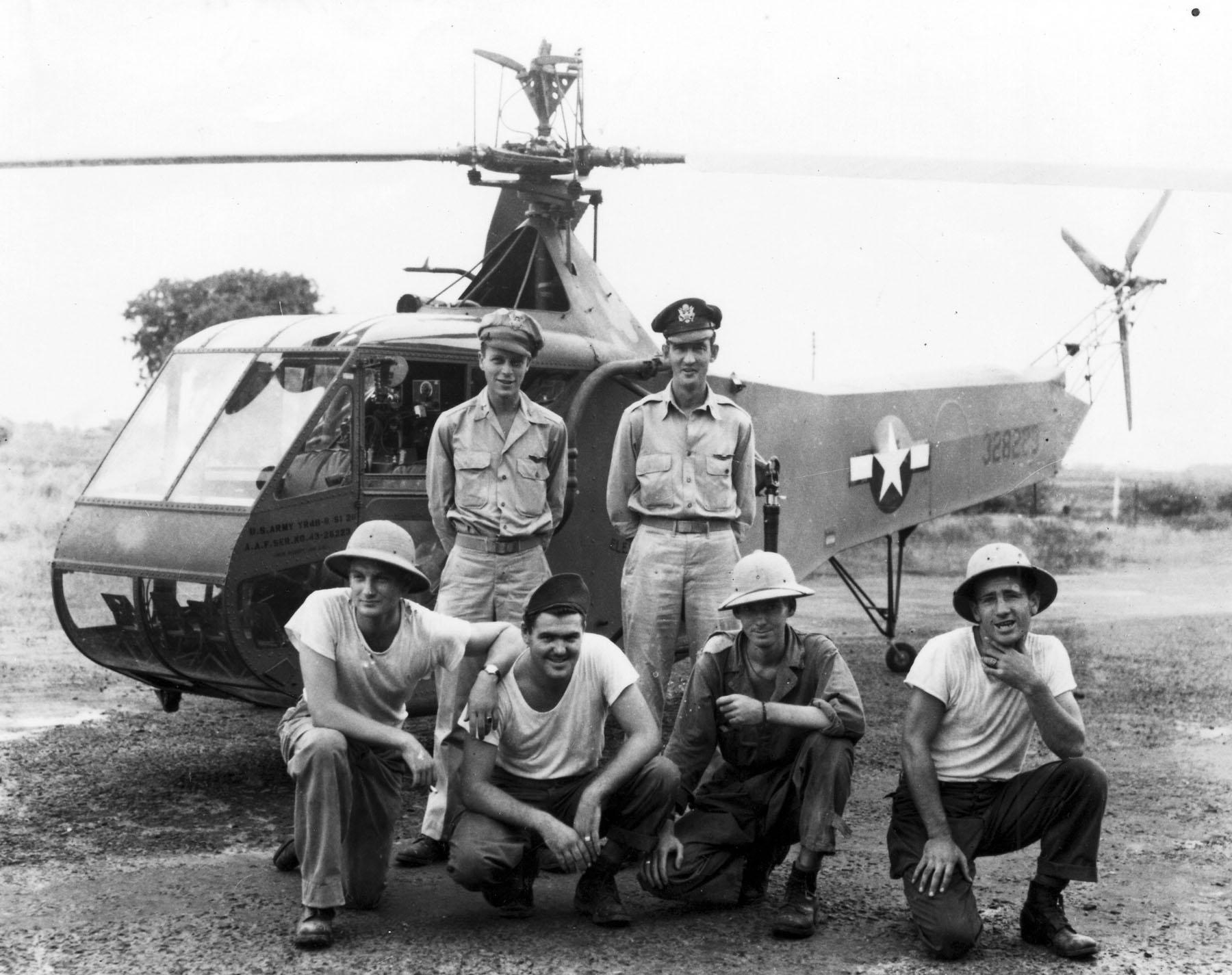 |
| Lieutenant Carter Harman (standing, left), 1st Air Commando Group, with Sikorsky YR-4B-8-SI 43-28223, Burma, 26 April 1944. (U.S. Air Force) |
|
The Sikorsky YR-4B was 33 feet, 7¾ inches (10.2 meters) long with a main rotor diameter of 38 feet (11.5 meters), and the tail rotor was 8 feet, 2¼ (2.496 meters) in diameter. The helicopter had an overall height of 12 feet, 5 inches (3.8 meters). The empty weight was 2,098 pounds (952 kilograms) and loaded weight was 2,581 pounds (1,170 kilograms). The maximum speed was 75 miles per hour (120 kilometers per hour) and the service ceiling was 8,000 feet (2,400 meters). The main rotor consisted of three fully-articulated blades built of chrome-molybdenum steel spars and spruce plywood ribs, with laminated spruce, balsa and mahogany forming the leding edge and a flexible cable forming the trailing edge. The blades were covered with two layers of doped fabric. The three bladed semi-articulated tail rotor was built with a spruce spar and alternating laminations of maple and mahogany, covered with fabric. Both the main and tail rotors had a thin brass abrasion strip covering the leading edges. The main rotor turned counter-clockwise, as seen from above. (The advancing blade is on the helicopter’s right.) The tail rotor was mounted on the helicopter’s left side in a pusher configuration. It turned clockwise as seen from the helicopter’s left. |
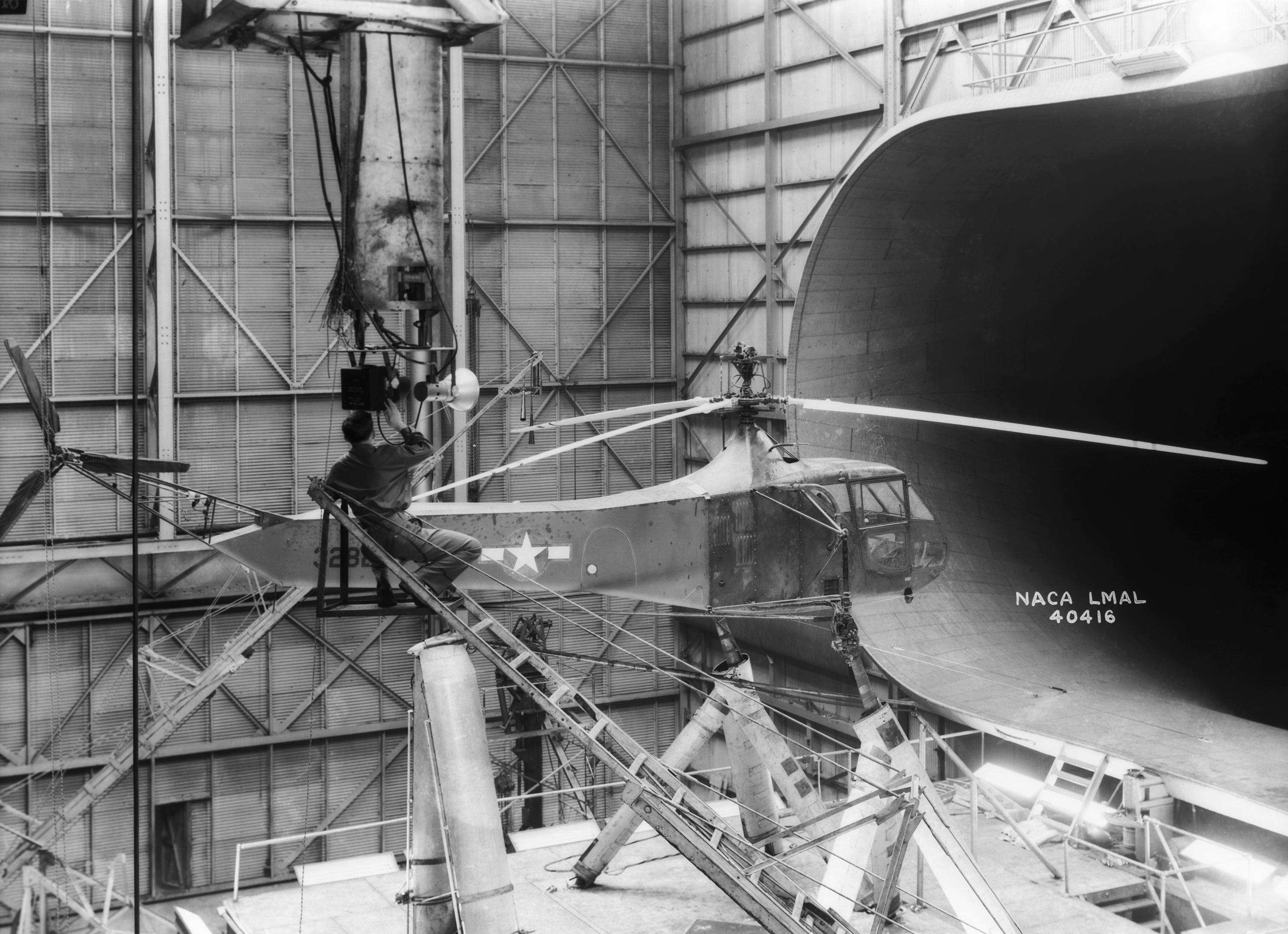 |
|
Sikorsky YR-4B 43-28225 in the NACA full scale wind tunnel, Langley
Field, Virginia, 1944. A technician is preparing strobes to take stop-motion photographs of the helicopter’s rotor blades while they turn at normal operating r.p.m. (NASA) |
| Before the war, Carter Harman had been a musician and author. He assisted Duke Ellington write an autobiography. Harman earned a bachelor’s degree in music composition from Princeton University in 1940. After World War II ended, he returned to his musical studies at Columbia University, receiving a master’s degree in 1949. He worked as a music critic for the New York Times and Time Magazine, and also continued writing books, as well as composing for ballet and opera. He was also a music producer and became executive vice president of CRI Records. Carter Harman died in 2007 at the age of 88 years. |
| Sent to me via email April 2015. I am not the author and do not know who is/was. The top article was sent to me in May 2015. |